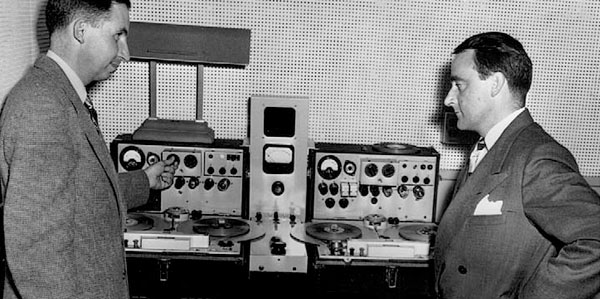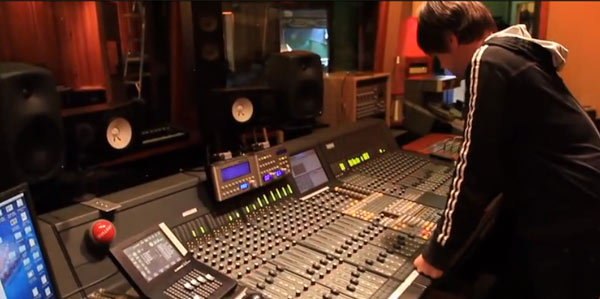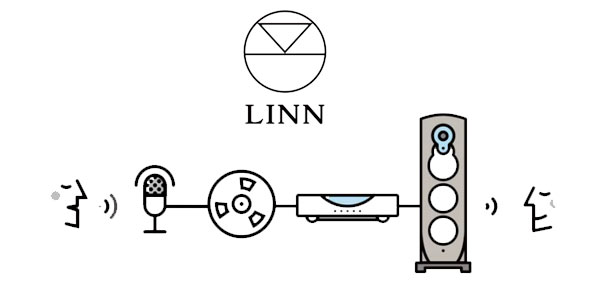The Mythical Master Tapes
I noticed it in the promotional video on the Linn website and I noticed it again this morning when I watched the first few minutes of Paul McGowan of PS Audio introducing his new DirectStream DAC (a piece that I will be discussing in greater detail very soon!). These companies don’t seem to know what is going on in the recording studios of the world because they’re developing equipment that is targeting the sound of a production process that has been virtually abandoned by the audio studios. Here’s a news flash…new albums are not recorded on analog tape anymore!
And there are important reasons why artists, producers and engineers aren’t recording on analog tape anymore. Producing commercial records is a completely different process than it was 30-50 years ago. Times changes and the tools and techniques associated with making things changes too. Can you imagine trying to design and build the Boeing 787 airliner using just T-squares, a slide rule and basic manufacturing processes operated by skilled machinists? After watching a lot of “How Its Made” shows, one learns that manufacturing and materials have dramatically altered the way things are produced. You simply can’t do the things required to work with Carbon Fiber structures with a Skilsaw and ball peen hammer.
Figure 1 – A still taken from the promotional video by PS Audio showing the Pro Tools PCM Digital Audio Workstation…no analog tape machine in sight. In fact, the console is digital too!
I chucked (more than once) during the opening minutes of Paul’s video when he asked, “have you ever really thought about how close this (compact disc) is to a master tape?” And the next shot in the video is a cutaway to a recording studio showing a Pro Tool PCM based multitrack computer workstation. There’s no analog tape machine to be found! He continues, “When we go to a recording studio, the master tapes must sound amazing!” I’m going to have to invite Paul on a field trip to a dozen of the busiest recording studios in Los Angeles. The big rooms in Los Angeles aren’t recording on 24-track analog tape machines and mixing down to 2-channel stereo tapes anymore. Modern records sound amazing because they’re not recorded on analog tape…they’re PCM digital.
The Linn people make the same assumption. Look at the block diagram that they used to illustrate the “direct” path between the artist and you. There whole marketing push for the Exakt system is to remove as many of the analog components between the artist and the listener. But looking at the diagram, they left the weakest link in…the analog tape machine! I realize it is a simplified graphic but the analog reel doesn’t have a place in current production studios.
Figure 2 – The block flow diagram from Linn Audio’s Exakt video showing the reel to reel as the recording medium.
So what are audiophiles to think when the equipment manufacturers are advocating a reality that hasn’t existed for decades AND one that doesn’t deliver the promised “low level details” that they hunger for? The fact is they built complex, expensive new pieces of hardware because the have to…new models replace the old models. But if the new models come with a message that the ultimate musical listening experience is the “amazing” sound of an analog tape playing in a studio, they’re just blowing smoke somewhere.




Unfortunately I know of numerous big name acts that are vehemently anti digital and are releasing new material recorded analog. And most of the analog studios in Nashville are heavily booked.
Recording and especially editing track analog is massively more expensive and difficult than digital, requiring an archaic skill set and equipment. If people can be convinced that it is somehow magically better to use 50 year old technology, then it is a lockin for old school studios to keep on billing high rates using their old gear.
I’m preaching to the choir here…
There are definitely a hard core group of analog fanatics that haven’t gotten hip to digital…yet. But they are in the vast minority.
Hi Mark, I wonder if PS Audio and Linn stress the analog link primarily because their market is so strongly tied to this format, for a variety if reasons: they listen to older recordings and performances, that is what they are familiar with, and until rather recently, CD playback had not lived up to it’s promise. Most of the audiophile market is middle aged and older men who seem to want to keep getting diffferent playback formats of what they listened to as young men. It is as if each new format holds out the promise of being Ponce de Leon’s longed for Fountain of Youth. The Baby Boomers have been hearing about “Master Tapes” for years, I think it is unrealistic to expect much change from marketers or the audience.
As an aside, I would like to suggest that you place a hyperlink in your realHD emails so people can link right back to your site to comment.
That’s a great idea…I will. I forget that most people read them as emails.
I can’t believe it! I just finished watching almost an hour of PS Audio DirectStream on YouTube. If I understood it correctly, Paul & Ted believe that their DSD DAC sounds better than any PCM DAC available and they are converting the PCM data to the DSD equivalent to utilize this. Did I get that right? If so, I can live with that opinion since they are really discussing the differences in the analog domain. I understand that a DSD DAC can be more simple, but isn’t jitter more of a problem in the DSD world? It is also very interesting that Ted Smith mentions that jitter only matters during the recording and when the digital data is converted back to analog. So I guess we don’t need those audiophile Toslink and other digital cables after all.
Blaine…I’m very hesitant to waste an hour my time watching the spin from Paul and Ted. Ted is right about the timing or jitter issue. It’s been minimized to such a level that it is not a problem in virtually all quality converters because the clocks are all of sufficient quality and the clocked are reshaped at each stage.
Regarding the silly tape reel depicted in Linn’s flowchart, I’ll bet they think it just looks hella sexy compared to the reality: a computer hard drive.
It does make a very iconic statement and is very easy to relate to. But there are ways to represent a digital audio workstation as a simple block icon as well.
The PS Audio DirectStream DAC (at $4000) upscales sampling rate to get rid of jitter (allows better low-pass filtering at high frequencies), but the Cambridge Audio DacMagic Plus does that for $500. DacMagicPlus came out in early 2012. Wish that someone will do a comparison of the two.
Sorry, might have mixed up the technical stuff. Inbuilt master clock to remove jitter and upscaling for better low-pass filtering? Not much of a geek. But the point remains: Doesn’t the DacMagic Plus do the same things at a much cheaper price? And why do we need to pay for a colour touchscreen?
Lin, thanks for the comment. The upsampling is not there for timing errors or to reduce jitter. The reason that the PS Audio piece uses the extremely high sampling rate for 1-bit encoding is to reduce the requirements for filtering at the output stage. I’ll write more about their new DAC but you question is very appropriate…audiophiles will get no new “information” or subtle cues from the CD PCM masters than what we’re already getting with quality DACs. It a case of sales hype and pseudo science once again.
Perhaps Linn and others do this because no-one has yet come up with an instantly recognisable symbol for “digitally recorded”.
The same applies to those brand-new road signs warning you of speed cameras ahead, that show a diagram of an old Rollieflex-type large-format film camera. As far as I know, the actual speed cameras are all digital these days.
Roderick…you may be right in the case of Linn…but not with PS Audio. Paul specifically talks about “the master tape”…I don’t believe he is confusing that with digital masters. He longs, as many do, for the sound of analog tape…in spite of its many compromises.
I think in context Paul is mostly referring to catalog material on CD that was originally recorded to tape. He seems to stress in his promotional postings how good all that old material found on CD will sound with his new DAC.
It may be a great way to sell a new DAC but the fact remains that playing a CD as a PCM file through a great DAC like the Perfect Wave PS Audio piece is a more accurate rendition of the original source fidelity than mucking around with it.